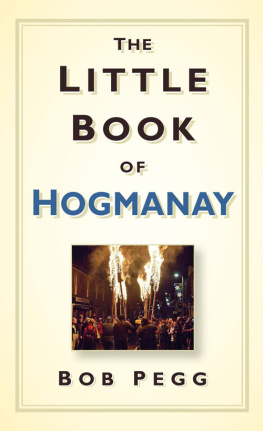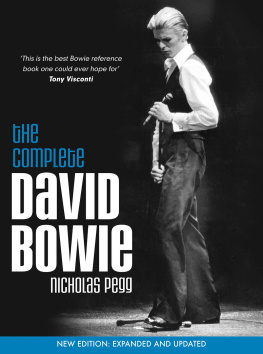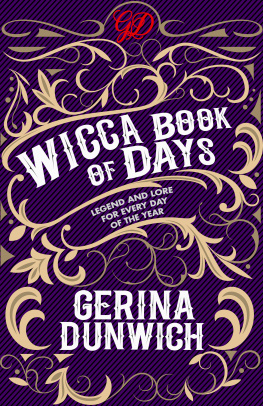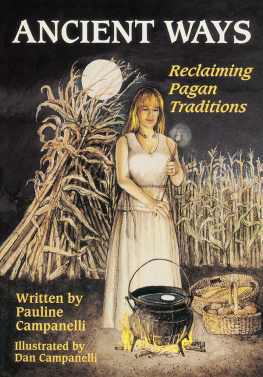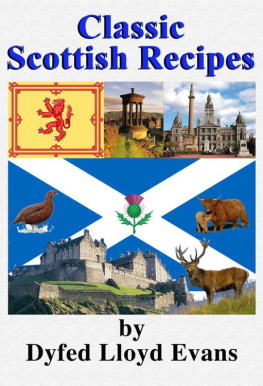
Tocher , the Scots word for dowry, is the title of a journal published by the Department of Celtic and Scottish Studies at Edinburgh University, with selections of oral, manuscript and photographic material from the School of Scottish Studies Archive. I am indebted to the department for permission to reference or reproduce excerpts on the following pages of the book. The volume number and contributors name are given; a sound archive (SA) reference indicates the year these recordings were made. Especial thanks for help and advice to Archives Assistant Caroline Milligan.
: Tocher 59, p.29, Graeme Mackinnon recorded by Emily Lyle SA1976.249.B1
: Tocher 44, p.103, Dan Ralph recorded by Margaret Bennett and Gail Christey, SA1986.80A
: Tocher 36-7, pp 358-361, conversation on New Year Guising in Lewis with Donald MacDonald, recorded by Alan Bruford SA1980.106
: Tocher 12, p.138, divination custom from Islay. Maclagan mss, p.849
: Tocher 8, pp 266-267, Annie Arnott, Skye, recorded by Calum Maclean, SA1953.10.A8; plus a note of a tradition about why the song was composed.
: Tocher 16, pp 320-322, Peter Morrison, Grimsay, recorded by Donald A. MacDonald, SA1973.172.A3
: Tocher 34, pp 252-255, Donald McColl, Applecross, recorded by Alan Bruford, SA1967.9.A1 and SA1975.57.A1
The poem Hogmanay (To a Pipe Tune) courtesy of the estate of Violet Jacob.
Manuscript account of the last shinty match on Iona, courtesy of the descendants of the Reverend Coll A. MacDonald.
Childhood song and anecdote from Hamish Imlach, from personal correspondence with Ewan McVicar.
Thanks for assistance to staff in the reference sections of Dingwall Library, Inverness Library and the National Library of Scotland; the British Newspaper Archive was also a useful online resource. Thanks also to Laura Smyth, librarian at the Vaughan Williams Memorial Library for directing me to Anne G. Gilchrists article.
Thanks to my old friend John Hodkinson. Once again he has risen to the challenge, creating images whose resonance goes far beyond illustration.
My grateful thanks also to the following, for generously sharing stories, memories, wisdom, and a recipe: Mike Anderson, Elizabeth Brown, Zan Dunn, Arthur and Joan Dutch, Vonne Hammerstone, Janet MacInnes, Adam McNaughtan, Geordie McIntyre, Alison McMorland, Ewan McVicar, Jim Miller, Tom Muir, Lindsey Payne, Donald Smith, Sheila Stewart, Lawrence Tulloch, and Alec Williamson.
Finally much more than thanks must go to Mairi MacArthur. Without her scholarship, research skills and support, this book would simply not have come into existence.
CONTENTS
Today we agree to call the last day of the Scottish year Hogmanay, whose evening is celebrated in a very particular and distinctive way. Towards midnight, people with the will and the stamina gather together in homes, hotels, hostelries and halls; and outdoors in streets, parks, towns and cities in the present case of Edinburgh in crowds of close to 100,000 individuals. There may be a ceilidh dance, a street concert or, for those at home, a TV special. Then come the Bells the universal term for the moment of transition between the Old Year and the New and members of crowds link arms to sing Auld Lang Syne , or at least the songs first verse and chorus, then repeat the chorus with increasing rapidity until it becomes a wild chant. Drams may be taken, to top up the drink that has already been consumed, and New Years Day will be spent, by some at least, recovering from Hogmanay excess.
Hogmanay nowadays is a highlight of a holiday period which begins at Christmas and continues through as far as 4 January, depending on where the weekends fall, though shops and supermarkets are kept open most of the time. But, in many parts of Scotland, people in their sixties and beyond will tell you that, when they were children, New Year alone was the time for midwinter celebration with widespread first-footing, baking and special meals and that Christmas was hardly recognised. This is not surprising, first because Christmas only became an official public holiday in Scotland in 1958, and second because it was banned as a festival by the Reformed Church in 1560. Despite the defiance of individuals and communities, and the relative laxity of the clergy in some places, it never recovered the vitality it had before it was proscribed. The contemporary Scottish Christmas is essentially the Victorian version with the tree, the cards and the wrapped presents but, before the Reformation, Christmas was generally called Yule, which was also the name for a more extended period, a time of sometimes wild celebration which could last from several days before the feast of Christmas itself until well into January, when people would carouse, start fires, make special foods, and ramble the streets in disguise, to the alarm of more sober citizens.

After the banning of Christmas, many of the Yule customs connected to it were shifted into the New Year period, a time when seasonal celebrations were still relatively tolerated by the authorities. So, in Scotland, New Year became a melting pot for activities that had previously extended over a period of a couple of weeks or more, during which Hogmanay Oidhche Challuinn in Gaelic was just one pivotal point among a whole range of festivities.
In this book I want to look at the rich and varied ways in which Midwinter is still celebrated in Scotland, as well as going back in time to show what, in the past, was an enormous variety of activity, from Guising and New Years Day sports, to divination and flaming tar barrels. Many different voices can be heard. Some speak in open disapproval, condemning practices they see as heathen or Popish; others report without comment; and there are those who openly celebrate customs which are a part of the lives of their own communities. Clergymen, antiquarians, lexicographers, folklorists, travellers, journalists, storytellers, singers and songwriters: what fine talk they would make at a Hogmanay gathering if only they could be gathered together exchanging old tales and personal reminiscences; and occasionally, to add spice to the rich black bun of conversation, disputing among themselves, as Presbyterian strictness at the one extreme wrangled with hedonistic devil-may-care at the other.
1
Hogmana, hoguemennay, hagmenay, hug-me-nay, huigmanay, hagmonick, hangmanay, huggeranohni, hog ma nae; these are some of the configurations used over the past 450 years for that mysterious word we now agree to spell as Hogmanay. But where does it come from, and what does it mean, with its embodiment of the spirit of the Caledonian New Years Eve, when the Scots celebrate with whisky, music, dancing and good cheer, and the rest of the world is very welcome to join in, if it pleases?
Over the last couple of centuries, the origins and meaning of Hogmanay have been discussed at length, but never rooted out. There are just too many possibilities to choose from. With its variety of spellings, the word begins to crop up relatively frequently in the seventeenth century. During the following century, it was scrutinised by a growing body of antiquarians, and John Jamiesons Etymological Dictionary of the Scottish Language, which was published in two volumes in 1808 and 1809 the dictionary itself a great feat of antiquarian scholarship gives the meaning of Hogmanay or Hogmenay as the name appropriated by the vulgar to the last day of the year. Jamieson adds that, in Northumberland, the month of December is called Hagmana, quotes from a late seventeenth-century account of plebeians in the South of Scotland going about from door to door on New-years Eve, crying Hagmane, and gives a further meaning as a New Years Eve gift or entertainment. Jamieson then goes on to suggest possible origins of the word, from the Scandinavian Hoggu-not or Hogenaf a Yule Eve night of animal slaughter to the French Au gui menez, translated as to the mistletoe, a cry uttered in the sixteenth century by participants in the Fte de Fous (or Feast of Fools), a midwinter period of license and satirical mockery. Jamieson quotes from an article published in the Caledonian Mercury on 2 January 1792, which says that:
Next page
